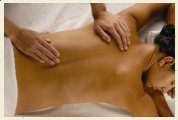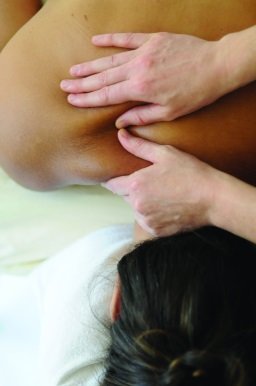Therapeutic Massage
During a Therapeutic Massage session I will use several different massage techniques and healing approaches. Our focus can be on several areas of the body as well as a full-body massage.
We will have a brief conversation before beginning so that you can communicate any symptoms you are having, your expectations during the massage and to ask any relevant questions. Please feel free to ask about the different types of massage techniques that I may use during your appointment to find the type of technique that is most ideal for you.
A Therapeutic massage is sometimes used as a general term that describes any type of massage modality that helps relieve pain, reduce stress, and work on a specific problem—such as a frozen shoulder.
People tend to assume therapeutic massage means deep tissue massage, and that they will get a very strong massage. But this is not always the case.
During a Therapeutic Massage session I will apply specific techniques blending Swedish massage, Myofascial Release, and Trigger Point Therapy using the right amount of pressure to address your need, and sometimes that may be a lighter touch.
For a Therapeutic Massage you will remove your clothes, though you may choose to keep your underwear on. You'll be covered with a sheet while lying on the massage table. I will move the sheet to uncover areas that I am actively working on.
Please communicate your expectations and intentions and speak up if there is a certain technique which feels good or something which you aren't comfortable with.
I ask you to talk to your doctor before getting any type of massage if you have any health concerns or conditions.
Techniques and Healing Approaches for a Therapeutic Massage in Joplin

Swedish Massage
Some people prefer a light to medium pressure that is normally used during a technique referred to as Swedish Massage. Strokes such as effleurage (long, flowing or gliding strokes) kneading and friction have a calming effect when performed slowly. These techniques have been shown to increase relaxation and to be helpful in reducing pain and joint stiffness.
Choosing more Swedish massage style of techniques is ideal for people who are new to massage, have a lot of tension and are sensitive to touch. It is a good choice for when you want to fully relax during a massage. Swedish massage is a gentle type of full-body massage.
Experts estimate that upwards of ninety percent of disease is stress-related. And perhaps nothing ages us faster, internally and externally, than high stress. Massage is an effective tool for managing this stress.
Myofascial Release (MFR)
Myofascial Release techniques are a safe and effective method that involves applying gentle sustained pressure into the Myofascial connective tissue restrictions to eliminate pain and restore motion.
Fascia surrounds every single cell of the body. The fascial system is one continuous, uninterrupted three-dimensional web-like structure, all the way from the top of the head to the bottom of the feet.
I use specialized stretching, compression, and cranial techniques to release key areas of restricted fascia in the body. Because the web is completely interconnected, these release can trigger a domino effect that release even more areas of the body - reducing tension, eliminating pain, improving movement, increasing energy and reducing stress.
Trigger Point Therapy

During Trigger Point Therapy, deep finger pressure is used to relieve tension from the deeper layers of your muscles and connective tissues with the focus on relieving trigger points.
I will focus on specific muscles that need to be released. While Trigger Point work may be more intense, you shouldn't feel any pain or soreness. This technique is best suited for people who have injuries, chronic pain, or a specific issue or condition.
The term "trigger point" was coined in 1942 by Dr. Janet Travell to describe a clinical finding with the following characteristics:
- Pain related to a discrete, irritable point in skeletal muscle or fascia, not caused by acute local trauma, inflammation, degeneration or infection.
- The painful point can be felt as a nodule or band in the muscle, and a twitch response can be elicited on stimulation of the trigger point.
- Palpation of the trigger point reproduces the patient's complaint of pain, and the pain radiates in a distribution typical of the specific muscle harboring the trigger point.
- The pain cannot be explained by findings on neurological examination.
Direct pressure applied directly upon the trigger point can deactivate a trigger point. If trigger points are pressed too short a time, they may activate or remain active; if pressed too long or hard, they may be irritated or the muscle may be bruised, resulting in pain in the area treated.
Looking for a particular page?
